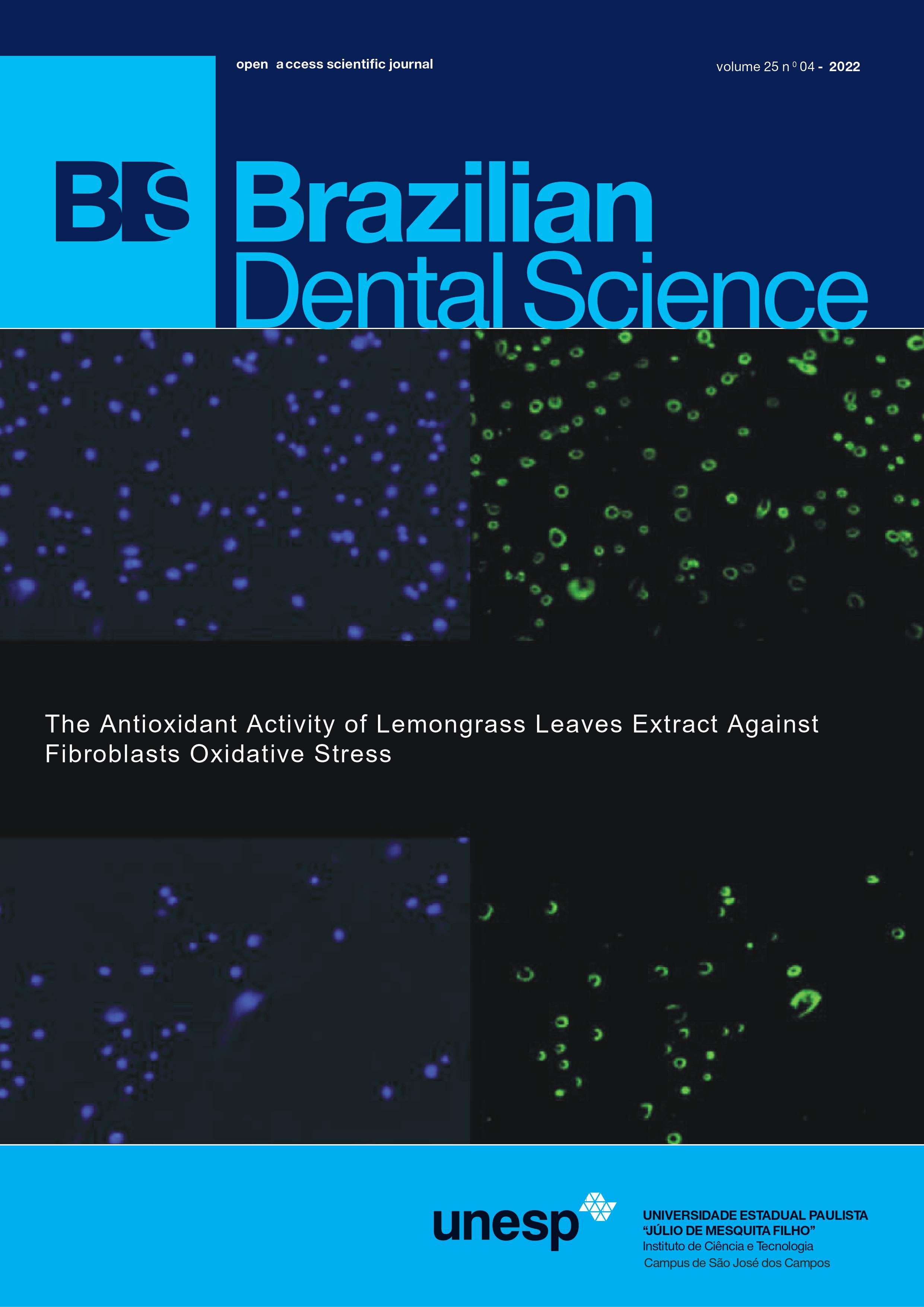Assessment of lateral and vertical tissue displacement obtained by the retraction cord and the Magic Foam® paste: a randomized controlled clinical trial
DOI:
https://doi.org/10.4322/bds.2022.e3294Abstract
Objective: to assess the amount of vertical and lateral gingival tissue displacement and recovery obtained by a
retraction cord and Magic Foam® paste. Material and Methods: twenty- two participants, requiring full coverage
prosthesis in the anterior area, were prepared using a deep subgingival chamfer finish line, then randomly allocated
to the retraction cord group (Group RC, n = 11 teeth) or the Magic Foam® Paste group (Group FP, n = 11 teeth).
The amount of lateral and vertical tissue displacement was measured by comparing the pre- and post- displacement
casts at three fixed points (midbuccal, mesial and distal) using a stereomicroscope. After two weeks, tissue recovery
was assessed by taking an impression using a double mix. The amount of tissue recovery was measured vertically
from the gingival margin to the bottom of the sulcus and by comparing the results to the pre-displacement records.
Results: there was no significant difference in the vertical gingival displacement (P > 0.05). However, there was
significantly less lateral gingival displacement of the Magic Foam® Paste in the mesial and mid-buccal surfaces only
(P < 0.05). The Magic Foam® Paste showed significantly more tissue recovery than the retraction cord (P< 0.05).
Conclusion: both the retraction cord and the Magic Foam® Paste are considered effective means of retraction as
they give the least amount of retraction needed both laterally and vertically.
KEYWORDS
Gingival retraction techniques; Gingiva; Retraction cord; Tissue recovery; Stereomicroscope.
Downloads
Downloads
Published
How to Cite
Issue
Section
License
Brazilian Dental Science uses the Creative Commons (CC-BY 4.0) license, thus preserving the integrity of articles in an open access environment. The journal allows the author to retain publishing rights without restrictions.
=================




























